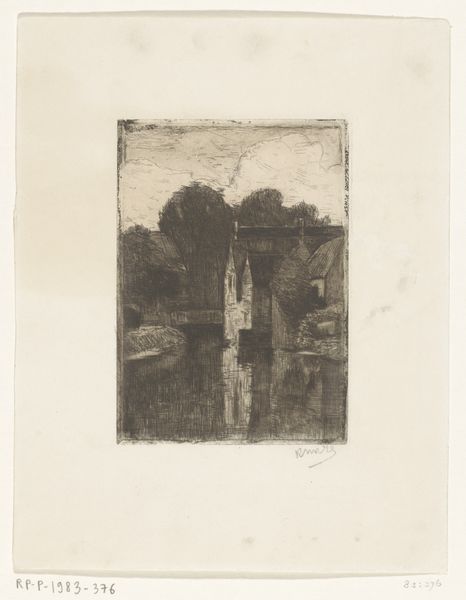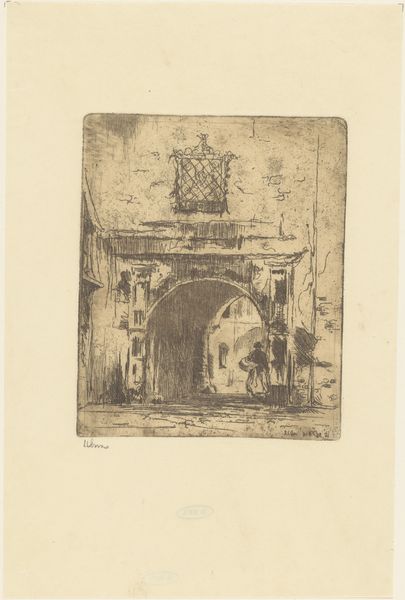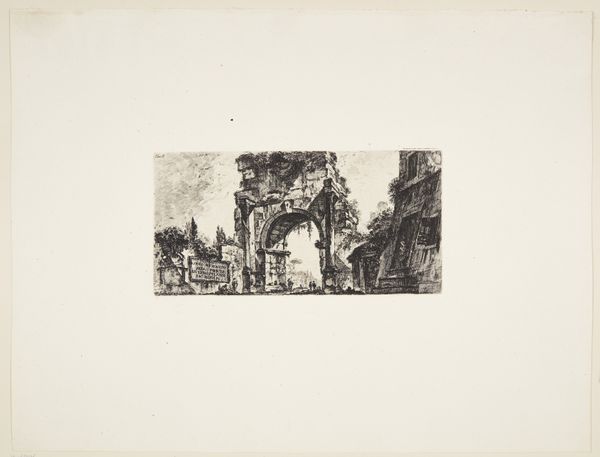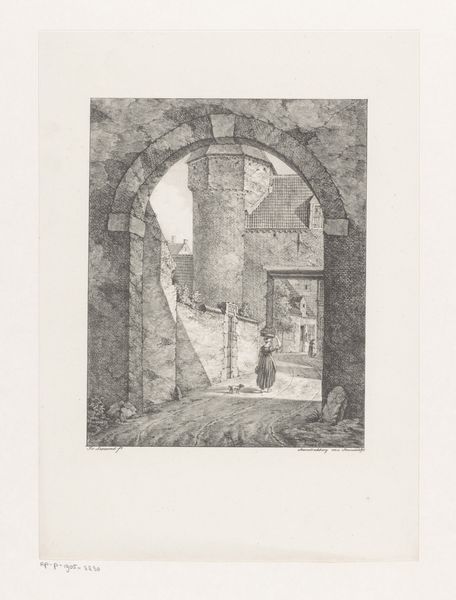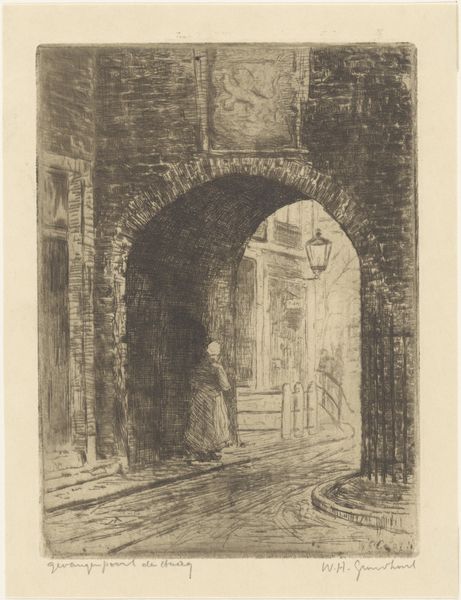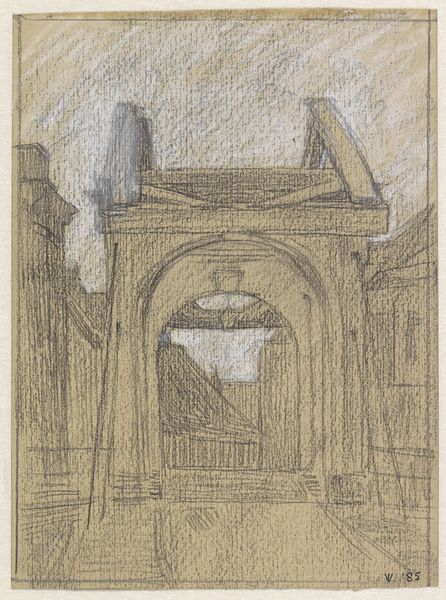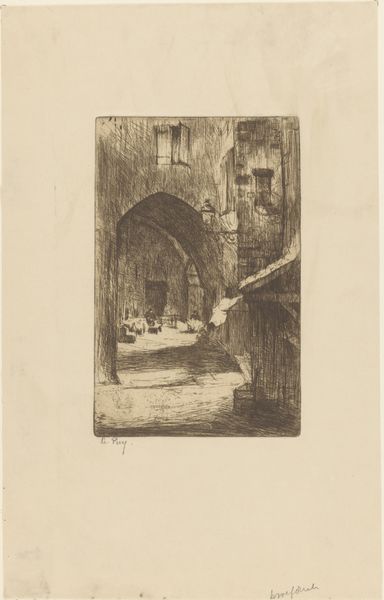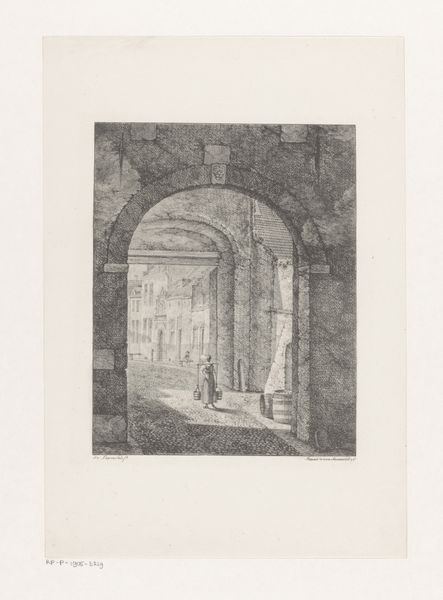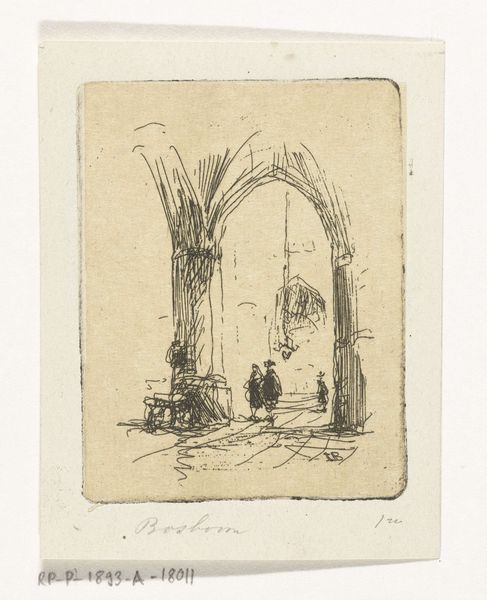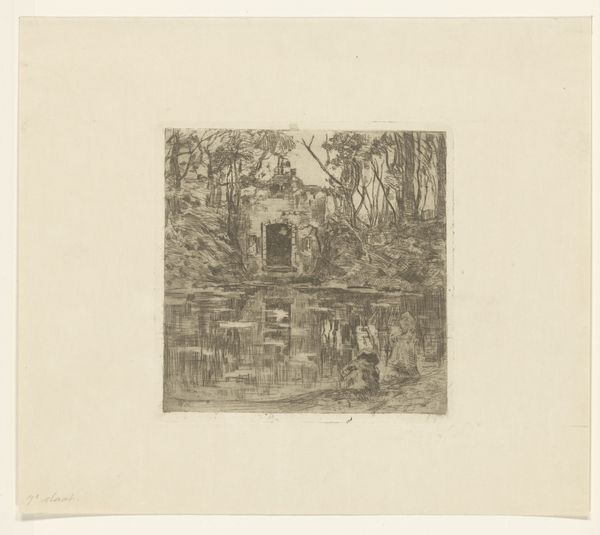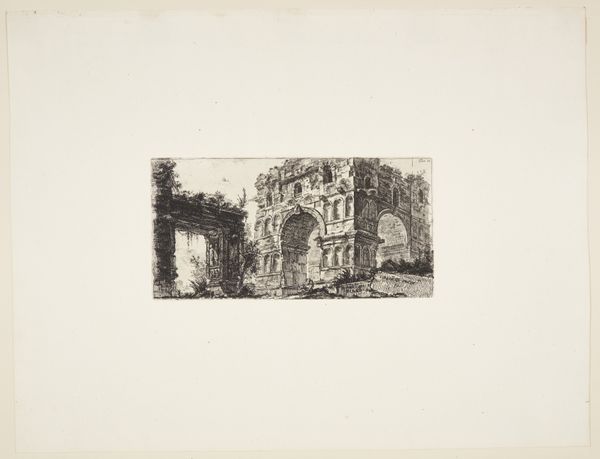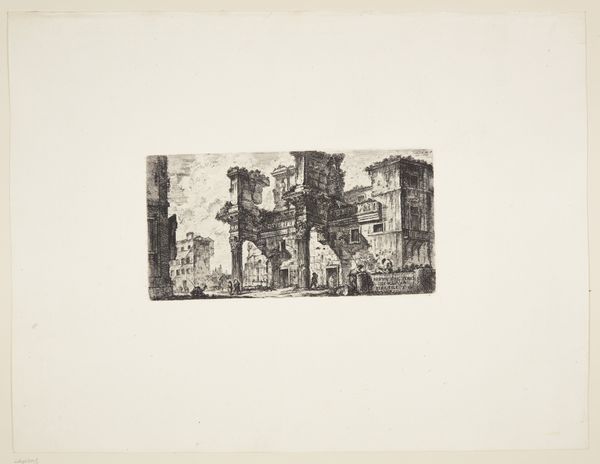
Entrance to the French Capuchin Monastery in Athens 1854
0:00
0:00
drawing, print, etching, paper
#
drawing
#
toned paper
# print
#
etching
#
landscape
#
etching
#
paper
#
cityscape
Dimensions: 191 × 125 mm (image); 191 × 125 mm (plate); 261 × 195 mm (sheet)
Copyright: Public Domain
Curator: This is Charles Meryon's etching "Entrance to the French Capuchin Monastery in Athens," created in 1854. The Art Institute of Chicago currently holds this work on paper. Editor: It's haunting. There’s a distinct sense of decay, like time itself is weighing down the stonework. The contrast between the bright opening and the crumbling edifice really pulls you in. Curator: Meryon was fascinated by the way urban structures reflected the human condition. The level of detail he achieves through etching—particularly in rendering the aged surfaces of the stone and mortar—suggests he labored intently on the printing plate itself. Editor: It’s difficult not to read the Capuchin monastery’s decline in a wider context, don't you think? Athens in the mid-19th century was newly independent but still bearing the scars of Ottoman rule and the Greek War of Independence. This image captures that liminal moment. Who are these figures emerging from this building’s shadow? Are they hopeful, cautious, or simply resigned? Curator: Consider that Meryon, who initially trained in the French Navy, later rejected the sea for art, mastering the very precise, industrial skill of etching. He approached it methodically, building layers of ink. This almost sculptural technique mirrors the physical act of building itself. It's process mirroring place. Editor: Exactly, and even more: It also prompts considerations of colonial power dynamics. What does it mean for a French artist to depict, in a ravaged state, a monastic building in a city emblematic of ancient civilization struggling to redefine its national identity? His vantage point has its own set of ideological implications, wouldn’t you agree? Curator: The etching medium itself made his detailed and emotionally dense scenes like this widely accessible; such prints circulated extensively, influencing public perception. Editor: And through that accessibility, perhaps it spurred reflections—though potentially filtered through a Western lens—on Greece’s path forward amidst ruin and restoration. This intersection really shows us how deeply social contexts shape both art and historical memory. Curator: Indeed, and how close observation coupled with masterful execution of craft gives such works lasting potency. Editor: Yes, it highlights how art serves as an entry point for crucial dialogue, challenging us to interrogate assumptions, power dynamics, and collective futures, as we try to come to terms with difficult histories.
Comments
No comments
Be the first to comment and join the conversation on the ultimate creative platform.
